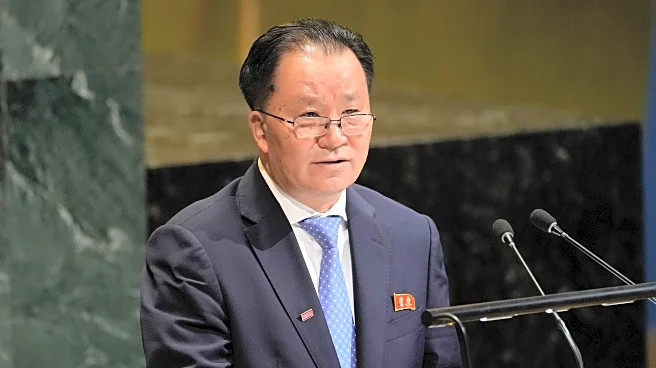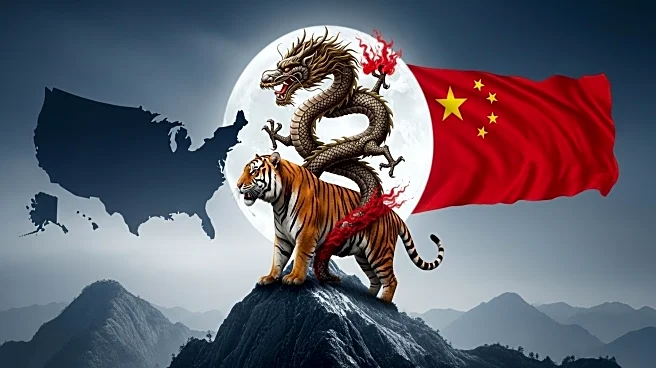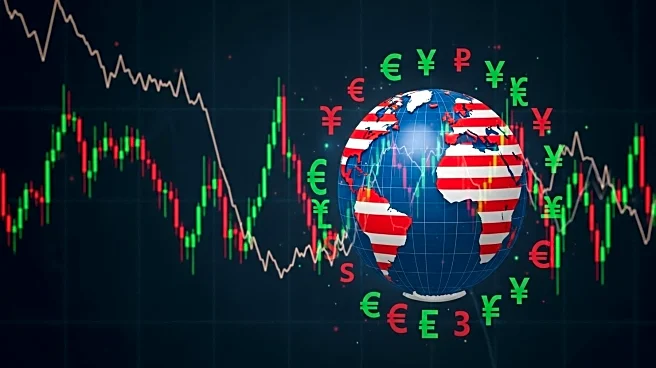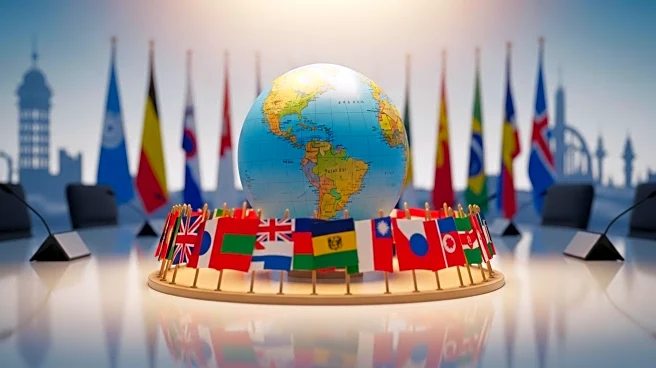What's Happening?
Foreign direct investment (FDI) is undergoing a significant shift, moving away from traditional Western economies towards Southeast Asia and Africa. This change is largely driven by China's aggressive expansion into green manufacturing, which is accelerating the clean energy transition and consolidating its industrial dominance. According to the United Nations Trade and Development's World Investment Report, FDI inflows to Europe, South America, and much of Asia declined in 2024, while Africa saw a 75% increase to $97 billion, and Southeast Asia experienced a 10% rise to $225 billion. The Middle East has also emerged as a major source of FDI, investing $113 billion in Africa in 2022 and 2023, primarily in logistics and infrastructure projects. China's focus on green investment is highlighted by its $220 billion investment in 387 projects across 54 countries since 2022, including solar and wind power facilities and new-energy vehicles.
Why It's Important?
The shift in FDI patterns has significant implications for the U.S. economy and its global economic influence. As China expands its green manufacturing capabilities, it strengthens its position in the clean energy sector, potentially challenging U.S. industries in this field. The increase in FDI to Africa and Southeast Asia could lead to enhanced economic development in these regions, altering global trade dynamics and potentially reducing the U.S.'s economic leverage. Additionally, the rise of private Chinese companies in green investments suggests a shift from state-led initiatives, which could lead to more competitive markets and innovation. However, this trend also poses risks, including environmental degradation and labor exploitation, which could impact global supply chains and economic stability.
What's Next?
As China continues to expand its green manufacturing investments, U.S. policymakers and businesses may need to reassess their strategies to maintain competitiveness in the clean energy sector. Host countries are increasingly imposing requirements on foreign investors to ensure local production and knowledge transfer, which could influence future FDI patterns. The U.S. may need to strengthen its domestic regulations and foster regional cooperation to ensure that the benefits of FDI are broadly shared. Additionally, the evolving global economic landscape may prompt the U.S. to engage in more collaborative efforts with other nations to develop markets that serve societal needs rather than just shareholder interests.
Beyond the Headlines
The shift in FDI patterns reflects broader geopolitical changes, with China leveraging its economic power to influence global trade and development. This trend underscores the need for a fairer international economic order, as highlighted by the 1955 Bandung Conference. The U.S. and other advanced economies may need to reconsider their approach to international economic cooperation, focusing on sustainable development and equitable growth. The rise of private-sector investments in green technology also suggests a potential shift towards more market-driven solutions, which could lead to increased innovation and competition in the clean energy sector.











